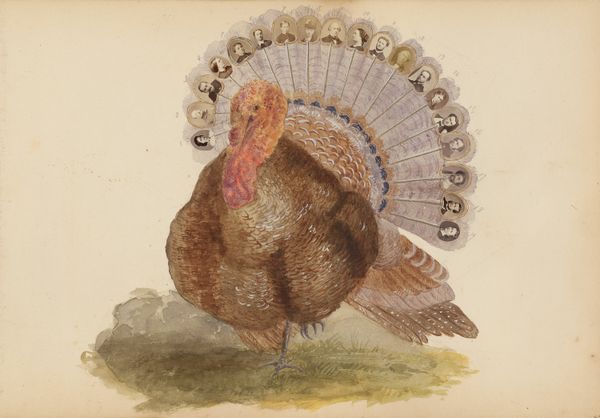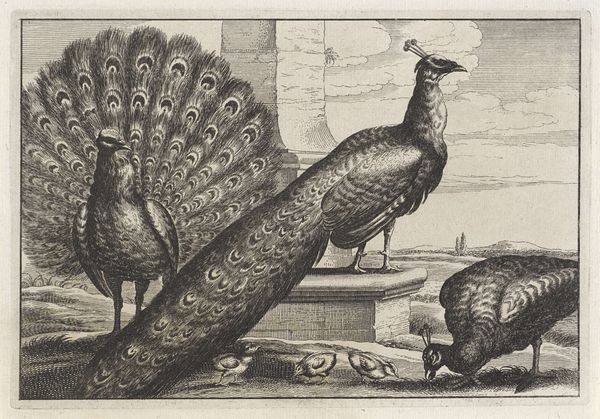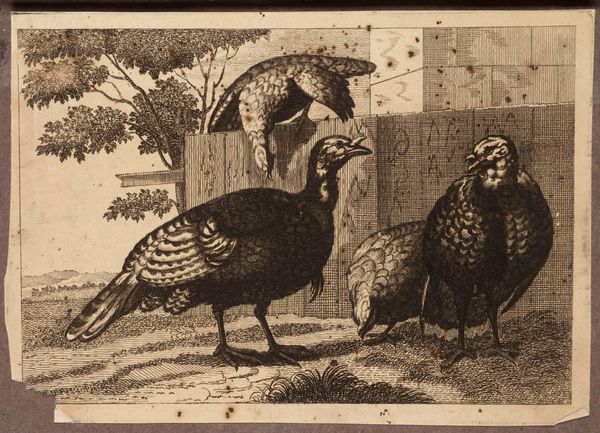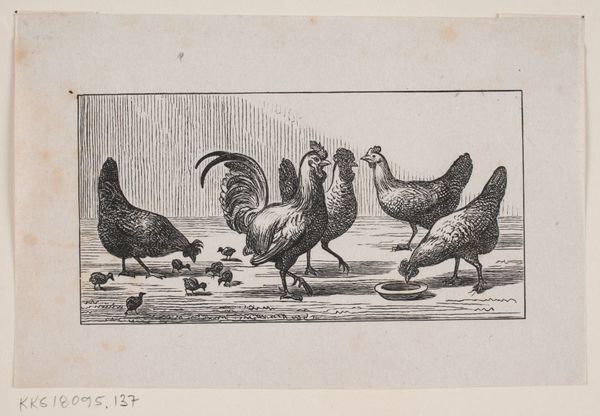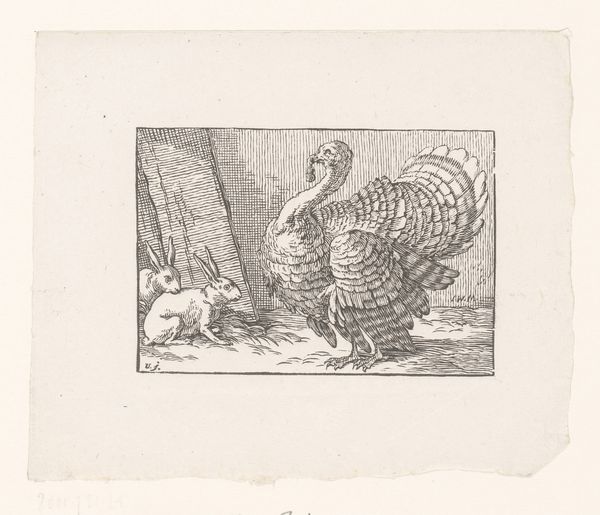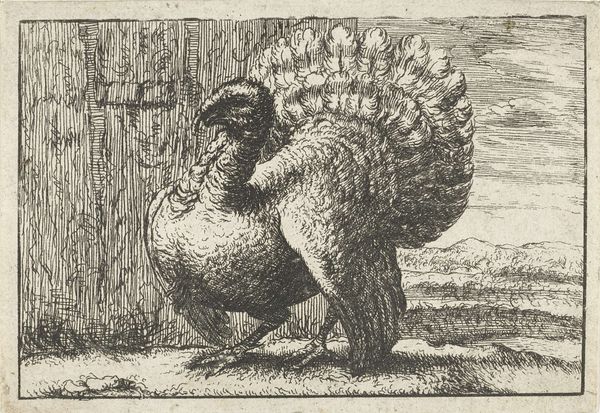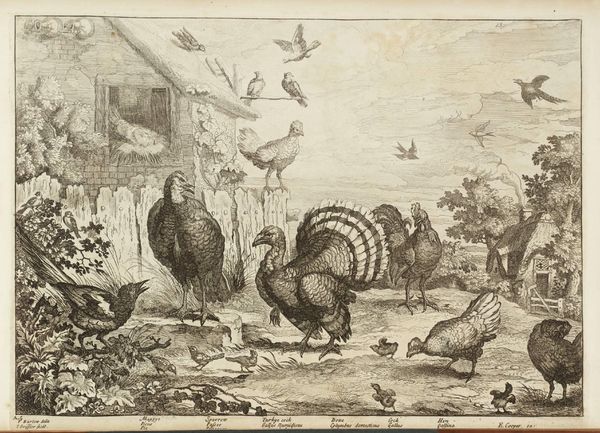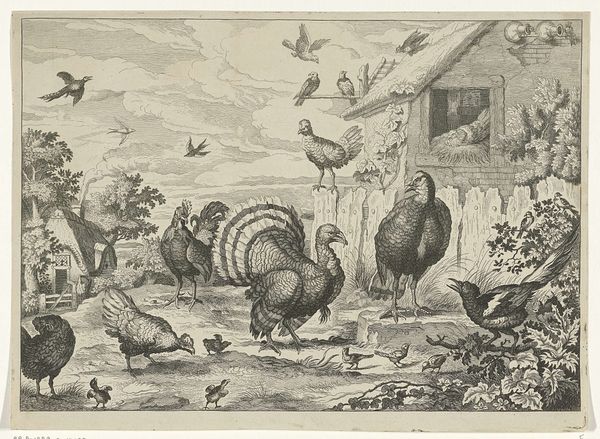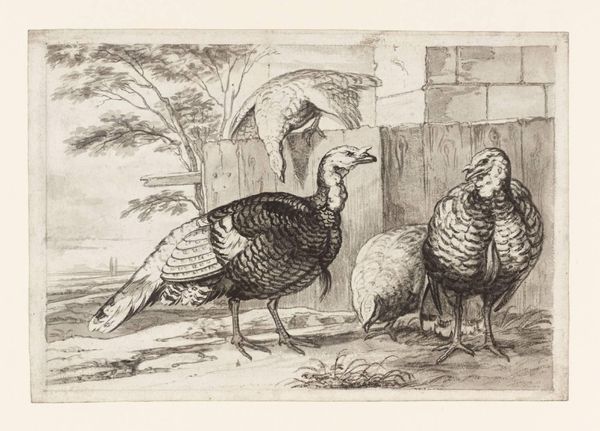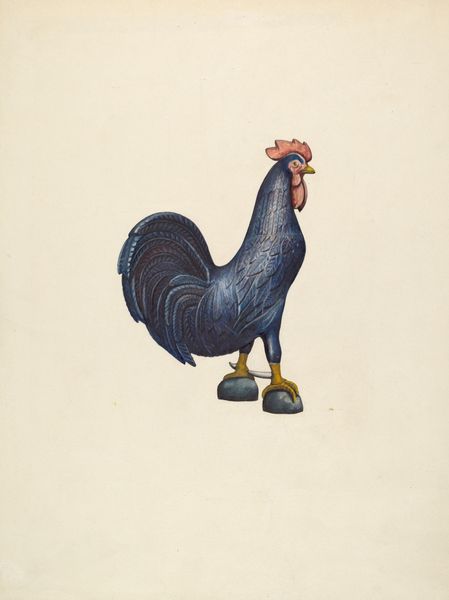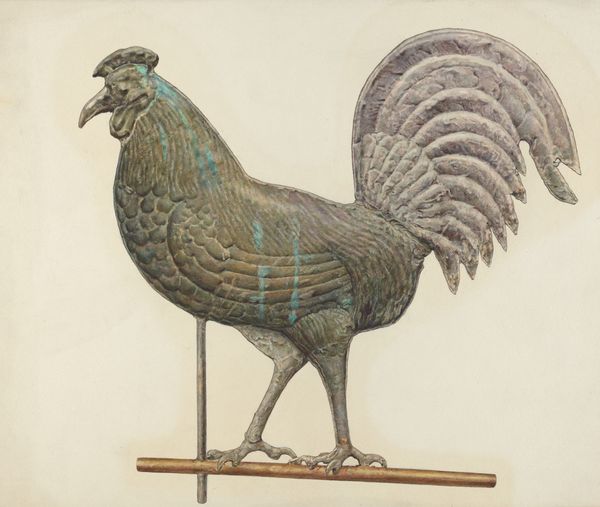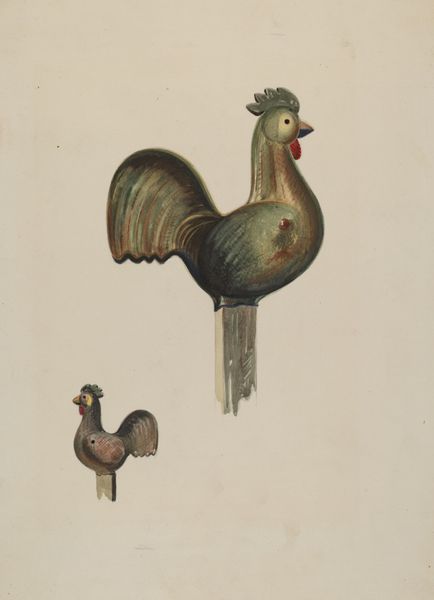
Pollo d'India. / Dindon. / Truthahn. / Turkey. / Kalkoen 1829 - 1880
0:00
0:00
print, watercolor
#
water colours
# print
#
landscape
#
watercolor
#
watercolour illustration
#
watercolor
#
realism
Dimensions: height 350 mm, width 430 mm
Copyright: Rijks Museum: Open Domain
Curator: This watercolour and print, dating from 1829 to 1880, presents us with a somewhat imposing turkey. Various names for the subject appear below, across different European languages: "Pollo d'India", "Dindon", "Truthahn", and "Kalkoen," all variations on Turkey. The print is attributed to firma Joseph Scholz. What are your first impressions? Editor: The overwhelming detail in the plumage is quite striking, each feather meticulously rendered. There’s a real sense of texture and light play across its body, which almost vibrates. It feels monumental in its presence, a result of careful composition and coloring. Curator: Indeed. While it seems to lean into realism through meticulous detail, it also resonates with broader themes of colonialism and the exoticization of nature. Turkeys, native to the Americas, were brought to Europe, becoming symbols of colonial exchange and transformed into commodities. Editor: So, beyond its visual appeal, this image tells a story of trade and cultural exchange. How fascinating that a seemingly simple rendering can reflect such complex global dynamics! Thinking about the form, the artist's employment of color here contributes to a real sense of volume, the layering producing a three-dimensionality, even on a relatively flat plane. Curator: Precisely. The consumption and presentation of the turkey became interwoven with class, race, and power, especially in Western culinary traditions and social hierarchies. Its presence on festive tables spoke volumes about status and access to global resources. Think about it as a commentary of power translated into the language of domestic consumption. Editor: I agree, and let's not forget how the setting - that rural backdrop - enhances the texture and perceived 'realness' of the illustration. In a more basic semiotic register, we see farm, nature, life, as represented via established visual conventions. Curator: Furthermore, by presenting it in multiple languages, it implies a global audience, amplifying the turkey’s role as a symbol of cross-cultural exchange and Western dominance over global resources. It reminds me how seemingly innocuous imagery served to promote and normalize colonial realities. Editor: Considering the semiotics of realism present in the coloring, details, and visual organization alongside the broader historical implications offers quite a compelling perspective into this work, and raises some profound questions about cultural perspectives in representing subjects from the natural world.
Comments
No comments
Be the first to comment and join the conversation on the ultimate creative platform.
